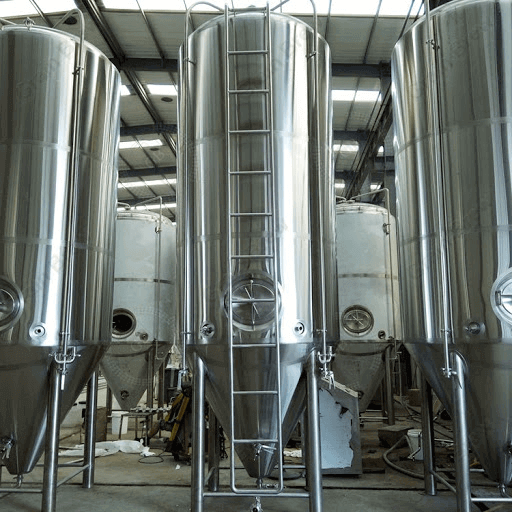Stainless steel is at the core of excellent brewing processes. Many brewers use stainless steel and soda kegs. Stainless steel brewing equipment is easy to clean and sanitize. It is also extremely durable. Stainless steel is an alloy possessing a smooth, bright, silvery, and long-lasting finish. The percentage of chromium in the steel is roughly 11-26%. Some nickel and titanium are added to increase the toughness and weldability, respectively. The majority of the brewing and fermentation equipment are made from stainless steel of the nonmagnetic series 300. There are many versions of the 300 series stainless steel, including 304 and 316. Both of these steel types have superior corrosion resistance, and it is also easy to weld them. Let’s look at a few methods used to clean and sanitize brewing equipment.
Cleaning and sanitizing steel brewing equipment
- Bleach is a standard solution for cleaning steel brewing equipment among novices.
- Caustic, also known as sodium hydroxide, it’s used in the majority of the clean-in-place processes of large commercial breweries. It works well to remove organic materials from the steel surfaces. Caustic comes in both solid and liquid forms. It is not an excellent cleaner for home use since it is quite dangerous and can cause severe burns. Although caustic is used to dissolve organic carbon compounds, it leaves deposits of calcium on the surface of stainless steel. It should be utilized sparingly since it also damages the stainless steel brewing equipment surfaces.
- Acids – beer stone can be effectively removed using phosphoric and muriatic acids. The two acids are also favorites for neutralizing the effects of caustic solutions used for cleaning steel surfaces. Acids are great for cleaning stainless steel brewing equipment since the pH of the residue on the surfaces can match that of the incoming beer more closely. Acid use minimizes the shock to the beer and to the yeast it contains. Nitric acid is utilized in the passivation of the stainless steel brewing equipment surfaces.
- Plastic abrasives are the most efficient way to clean stainless steel brewing equipment. Hands are used with scrubbing pads and synthetic brushes or pads to remove residue from steel surfaces. The abrasives can be coarse or very fine. All that is required is some elbow grease, hot water, and a good scrubber. Steel wool should never be used since it induces rust.
The beer stone problem
Calcium oxalate is the most common deposit left on the surface of steel brewing equipment. It is also called beer stone, and it appears as a brownish or brownish-white coating on the metal surface. It occurs regularly on brew kettles, primary fermenters, hop jacks, and counter-flow heat exchangers. The longer the contact with hot wort, the more the buildup of beer stone will occur. The beer stone must be removed before it affects the flavor and eventually turns into a sanitization problem. The calcium buildup happens because stainless steel cannot be wetted by hot wort; thus, a thin layer of air is left between the hot wort and the steel.
Conclusion
The various techniques used to maintain and clean stainless steel brewing equipment include using bleach, acids, caustic, and plastic abrasives. As a brewer, your choice of cleaner depends on the nature of your steel brewing equipment. Picking the right cleaner also maintains the clean, smooth finish of your brewing equipment.
